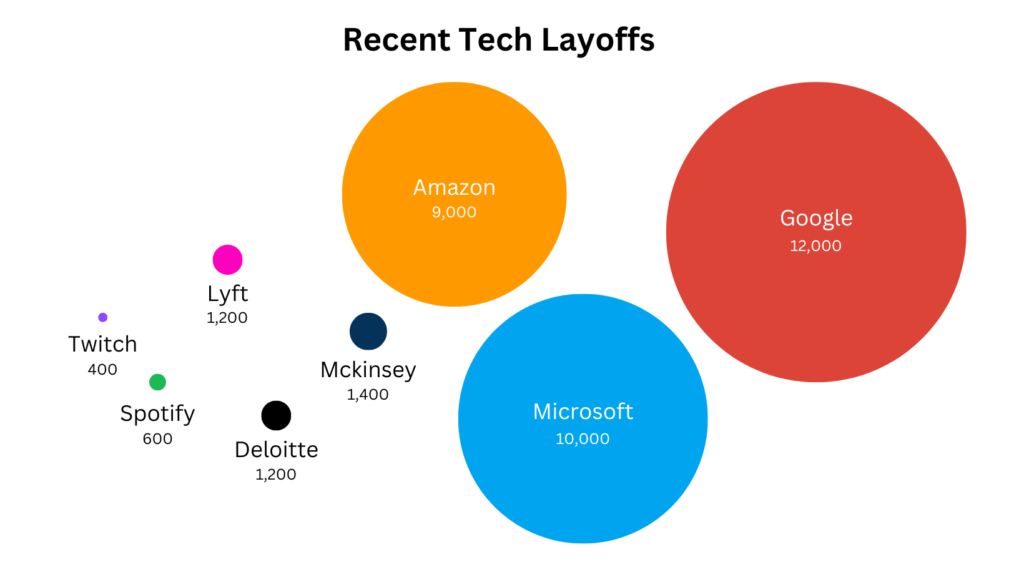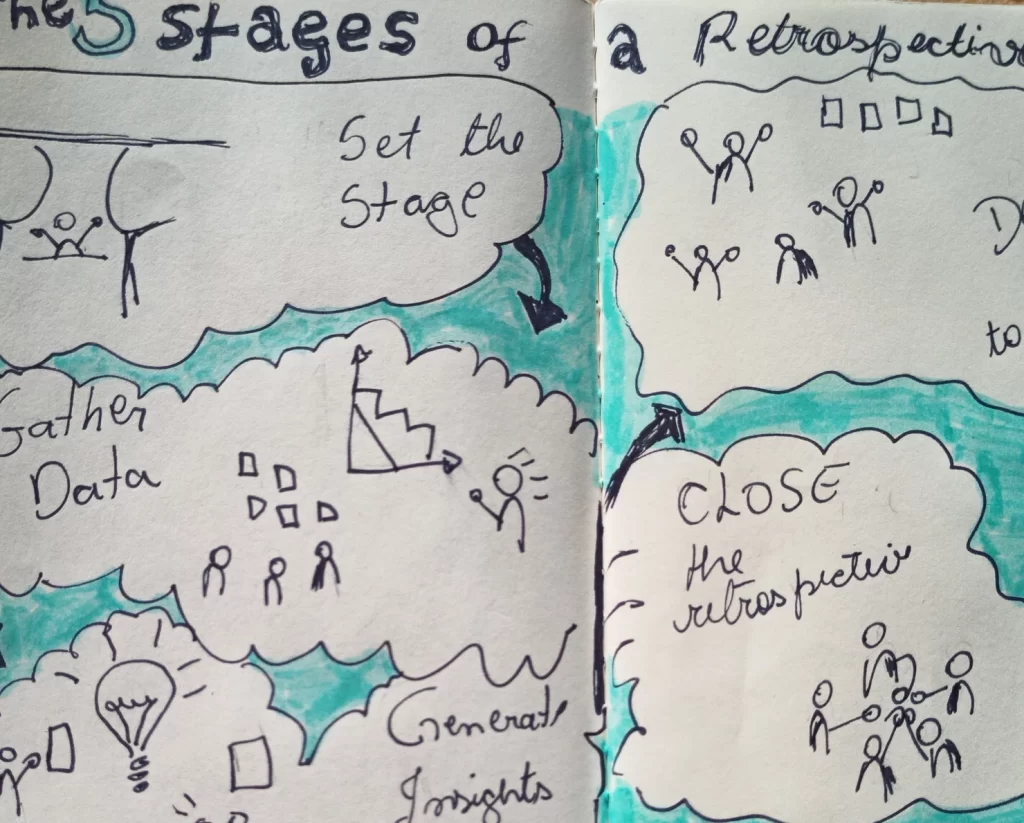
If you are looking for a career move in the agile job market in 2024, maybe as an agile coach or a scrum master, it might feel like it has become harder than ever. And you’d be right, it has become harder! Especially if you don’t have much experience.
There is NOT a place for everybody out there, not in the same sense as before 2023. Competition is fierce now, and I’ll explain why. So, keep In mind that people with more competence will always get the best spots and use this as fuel, not as a disappointment.
In this blog I will be sharing with you a couple of important things as far as succeeding in the agile job market for 2024. First, you must understand the landscape. What’s going on in the realm of organizational agility? If you don’t understand that, you’ll continue to apply old tactics to get a job as agile coach. And get frustrated.
The second thing I’ll be sharing is how you can orient yourself in this new landscape. Quite honestly, there is a lot of good stuff happening and there are plenty of non-obvious opportunities. This is actually a year where you can grow your skills and make better money, if you are ready to do the work.
Without further ado, let’s get started!
A bit of context: The big tech layoffs
So let’s set the stage first. It all started at some point in 2022 and it spilled over to 2023. Everybody was talking about the fact that Capital One, the financial institution who is all the rage about agile, at least in Canada, announced a big layoff that touched almost all of their so-called “agile” workforce. We are talking scrum masters, agile coaches, release train engineers, etc. We are talking about over one thousand layoffs.
What then followed was other companies who were undertaking big agile transformation in the Fintech industry did the same (you know they always follow each other).
Some people were quick to cry “agile is dead”, but they failed to notice an important aspect: this was not an “agile failure” type of layoff. It was one of the now, sadly, almost traditional yearly or bi-yearly tech layoffs.
If you look into 2022 and later in 2023 the numbers are scary. So many tech companies, from your famous tech giants like Alphabet (Google) and Amazon, to startups, to even the consulting companies offering agile transformations in their menu, like McKinsey or Deloitte, laid off a big number of employees.

What you must understand, though, is that those cuts were considered technology. Not agile in particular. Yes, scrum masters, agile coaches and the likes were laid off. But not just them. These organizations hired like crazy during the pandemic, betting on growth, because despite the chaos and uncertainty, 2020 was a fantastic fiscal year, which continued through 2021. And these companies hired so much betting on this ascending trend.
We now know that this not only did not materialize, but we are also moving towards a recession. Then ChatGPT and AI came in on the menu and are everywhere. We now have companies trying to see if they can automate instead of hiring. In summary, organizations are trying to achieve leaner operations.
More context: Ineffective agile must be highlighted
But let’s be careful here. Let’s not just blame “corporate evil greed” because that’s too easy. Wanting an organization to be efficient is a valid concern.
But it begs for reflection: if all the dreams of the promised agile transformations had materialized, these companies were supposed to be experiencing the growth and efficiency they expected. Which they aren’t.
So let’s take a look at the state of the agile marketplace. Who’s operating there?
Trainers and built-in agile consultants.
For years, the 2-day certification market promised the miracle of instant scrum mastery and product ownership and whatever have you. And people on both sides of the equation bought it!
It seemed like an easy skillset to gain.
People wanting an easy entry into the tech space, whether or not they had any tech background, thought they could make big bucks in a job position they considered high status.
And companies desperate to solve problems via a “magic hire” gladly bought into it as well. They thought they could train away or contract away their agile change.
Because these things take time and every competitor is doing “agile transformations”, one by one so many companies started hiring agile consultants and employees which created a happy agile bubble.
Scrum Masters caring for velocity and burndown and Agile Coaches that just ask generic or annoying questions became the state of the art. People thought agility was that easy.
And it must be said these transformations cost a lot. Upfront. The investment for each agile transformation is in the tens of millions as just one of these positions’ costs yearly at least 100 thousand dollars.
There are 3 main problems here:
#1: ROI
Looking at the size of the investment, millions every year for years, are these companies experiencing a result compatible with the investment? Not really. That not only creates skepticism, but now organizations are looking into how they can recover some of that money.
#2: Inadequate competencies
I’ll talk more about this in a second, but let’s face it, you probably know one or two coaches or scrum masters that are not capable of negotiation, of managing up, of rallying the team around the right problems to solve, and measuring the right thing. Nope, they are doing kumbaya retrospectives and complaining about management. When their role is to influence up and laterally on management. The very thing they complain about.
#3: Agile being installed
This was doomed from the beginning. Installations of massive change is incompatible with what agility is. These agile deployments are very disruptive and top-down inserted. In agile we achieve big through small. We look for points of collaboration and autonomy.
The truth of the matter is that a while back it was actually OK to offer a naïve approach to Scrum or any framework and just try things and see what changes in a team or in an organization. But companies have been shifting in their needs, so the agile skills required are now different. How so?
Let’s explore.
What companies really need as far as agile
Now, companies need, and rightfully so, rather targeted agile approaches. No more generic, incomplete agile frameworks. No more big agile transformations. They want something that works for them and with them.
It’s not that agile frameworks are wrong, they just aren’t enough. They have limitations as to the context in which they can be applied and they are not silver bullets, never were. They don’t offer a blueprint for everything in an organization.
The good news is that you could be creating your own agile framework specific to your organization. One that is more adapted to your context.
If that sort of thing excites you, then stay tuned for more details about Simple Agile, my model to help you understand agile no matter the frameworks you use. That will be coming in future posts.
Now, besides specificity, organizations ask for better approaches to things and for people.
Better agile approaches to things
Lean operations come to mind. Effective (delivering the right thing, or value, to the customer) and efficient, leaner, with the best use of resources. Without compromising quality, of course. Better cost, better value, better speed, better everything.
That’s because the level of insights for consumers and the speed of change keeps accelerating and there is no way of knowing what AI can do to impact organizations yet.
Scrum masters looking at burndown and velocity are unprepared for this.
At the same time, organizations won’t necessarily let go of their current structures. Not that fast, not at once. You know the saying “what got you here won’t get you there”; but letting go of “what got you here” doesn’t need to be a total destruction, you can shed some pieces of the old structure and replace it with new ones.
Better flow of work, better product development, better management of things and constant improvement of process and performance is what organizations are after.
Better agile approaches for people
Great Agile Coaches and Scrum Masters must be leader-doers, not leader-trainers. You know that one who arrives in the organization, teaches Scrum, and polices what people do? None of that happens anymore.
The new agility requires a different type of leadership, where leaders know how to set clear expectations without straightjacketing people into their individual solutions. Where leaders are bold enough to be transparent with results top-down and bottom-up. Where results, data, and evidence are taken into account when making decisions.
Who can coach someone like that?
This means the coaches of now and beyond need to know how to educate and talk sense into those managers. They need to understand what makes great teams, how to generate autonomy, how to improve performance, both for people and for the processes in an organization.
The agile coach looking to be hired in 2024 must produce results, instead of arguing for the limitations of their organizations.
I did call out the specific skills you should be zeroing in on to be a great agile coach in 2024 in a previous post if you want to learn more about those.
Good news: No more gatekeeping, as agility becomes “everyone’s” problem.
I know this is not a short post, so congratulations if you read everything before getting to this part.
And this highlights an important aspect, my friend: context is everything. By reading from the beginning, you can now understand (some) of the context on why we came to be in such a tight spot in the agile job market. And that will allow you to take my tips but also to consider more avenues on your own. Most people jump to the tips, like the generic Scrum Master who is more worried about finding tips to run yet another fun retrospective instead of fixing them to be more effective.
But you, my friend, got the gold.
The second cause for celebration is that now, more and more, agility, adaptation, flexibility in the face of change, is expected as a skill. From everybody in the organization. There is no more gatekeeping. Agile is not expected only from that person named as a coach. Any contributor in an organization can jump in to solve a problem or influence a situation.
That means, everybody is an agile coach, at least potentially.
And it also means your lived experience and applied agile knowledge will be more favored than specific certifications. It’s already happening, I’ve written before about the state of scrum master jobs and we could already see how certifications, in many job posts, were a nice-to have. Your proven track record and ability to solve issues will become more and more valuable to get a job in the agile marketplace.
Which is exciting!
So, to recap what you need to know about the agile job market:
Tech layoffs are normal and will sadly happen every now and again in big numbers. They are not happening because of agile.
The state of agile got elevated and so are the expectations around the roles of Agile Coaches and Scrum Masters. Knowledge of frameworks is not sufficient and hard skills in management as well as a number of soft skills are now a necessity. More than certifications in fact.
The agile job market is now highly competitive and there’s not easy room for beginners. While not obvious, though, there are many opportunities to act as an agile coach or scrum master, even if you don’t get the official title.
These trying times can be tough, but they can also create the opportunities you may have not considered before, when agile coaches were more distant from their teams and the Agile Center of Excellence was your only place to apply for a job!
Get certified as an agile coach in a simple and supported way! Our highly engaging courses follow the best practices of adult learning, offer the quality accreditation of ICAgile, and our trainers are professional agile coaches themselves, with years of experience in the trenches.



